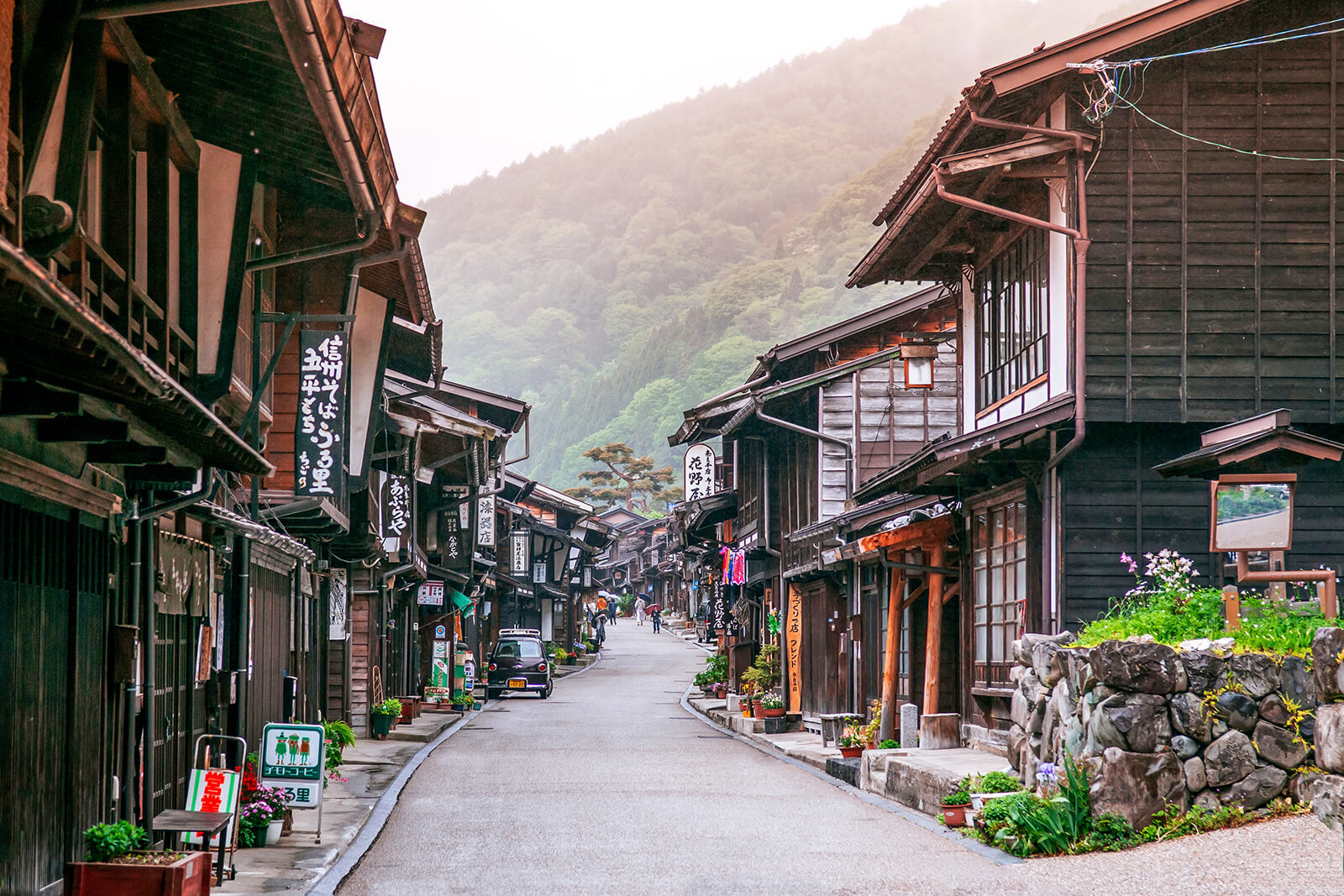Walk the Samurai Trail to Narai of a Thousand Houses
Go back in time by walking the Nakasendo Trail from Yabuhara over the Torii Pass to Narai, one of the best-preserved sections of this famous trail samurai used for traveling between Edo (old Tokyo) and Kyoto
Update:2021/09/28

The old Nakasendo runs between Kyoto and Tokyo, passing through the mountainous terrain of the Kiso Valley along the way. Here, some of the historic post-towns where travelers would stay during their long journeys still stand. And in some places, sections of the trail itself remain, allowing visitors to experience walking the Nakasendo for themselves.
One of the most well-preserved towns of the Nakasendo is Narai, and the section connecting it to the next post-town of Yabuhara is still intact. This 6-kilometer-long trek takes about 3 hours to complete, ending with a well-deserved break in Narai to take in all its Edo Period beauty.
Walk the Samurai Trail to Narai of a Thousand Houses
About the Yabuhara-Narai Trail

The Yabuhara-Narai Trail connects Yabuhara and Narai post-towns, crossing the highest point of the Nakasendo at Torii Pass (1,197m). This section of the trail is about six kilometers long and takes about three to three-and-a-half hours to complete.
While not as well-known as the Magome-Tsumago trail, this section is well worth the trip for anyone interested in walking the Nakasendo. Not only is it less busy than the Magome-Tsumago portion, it’s easier to access as well. The Yabuhara-Narai route begins and ends at JR train stations and doesn’t require any additional buses.
Details
Start Point: Yabuhara Station
End Point: Narai Station
Distance: 6 kilometers
Average time to complete: about 3 to 3.5 hours
See here for a video walkthrough of the trail
Arriving in Yabuhara Post-town

The Yabuhara-Narai trail begins at Yabuhara Station. The building itself pays homage to its post-town history and is surrounded by steep slopes covered in forest. The narrow valley here is dotted by houses and rice fields.
As you walk along the old Nakasendo, the main road of this quiet town, the buildings slowly begin to age. Every now and then remnants of Yabuhara’s post-town past pop up, like shops selling the town’s specialty, orokugushi combs.

The road steepens as it weaves through Yabuhara’s residential area. Eventually, the houses and asphalt give way to the woods and the romantic unpaved path of the Nakasendo trail.
Walking the Trail to Torii Pass

The start of the trail is marked by a set of cobblestone steps. From here, the trail grows steeper and steeper as it approaches Torii Pass. Occasionally, the woods part to reveal splendid scenery of the town below. And sometimes the trees themselves are the scenery, such as the lane of horse chestnuts that turn gold in autumn.
A third of the way along the trail is Ontake Shrine. The shrine is dedicated to Mt. Ontake, one of Japan's most spiritual mountains. Weary travelers would have stopped here to pray and rest a spell before continuing their journeys. On clear days, you can even see the peak of Mt. Ontake across the valley.

After crossing the highest point of the trail, Torii Pass (1,197m), it slowly descend towards Narai.

Reaching the Post-town of Narai

At the end of the hike, you overlook Narai, the longest town of the Nakasendo with 50 historic buildings lining a one-kilometer stretch of road. These beautifully preserved buildings are home to shops, restaurants, cafes, small museums and inns.
Why is Narai so long, you ask? Well, thanks to the difficult terrain of Torii Pass, the town received plenty of weary travels who would spend the night. At the same time, local craftsmen produced and sold beautiful lacquerware and wooden tools. As you walk along the street, you’ll see plenty of shops with red and black bowls, chopsticks and trays on display. The town even has a lacquerware festival that they celebrate annually in early June.

You could spend hours here taking photographs of this timeless town. But don’t forget to stop for a bite to eat! After a long trek, there’s nothing quite like a hearty and healthy meal. Soba noodles are a specialty in the Kiso Valley, and many of Narai’s restaurants feature it on their menus. If you’d like a bite to-go, try salty-and-sweet gohei mochi instead.
When you’re ready to say farewell, walk to the end of the Nakasendo’s longest post-town to reach Narai Station. From there, you can take the train towards your next destination such as Matsumoto or Nagoya.

















